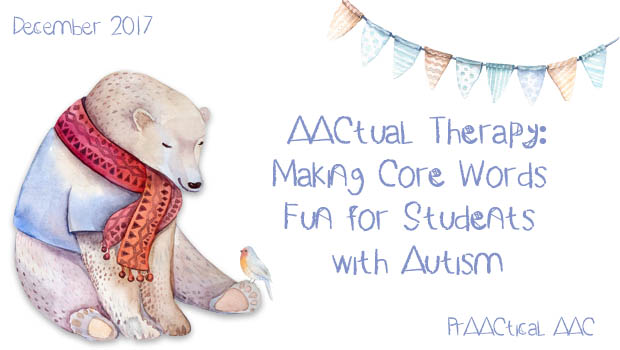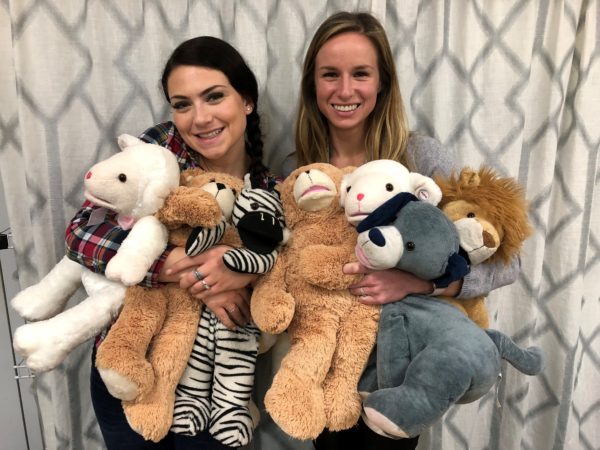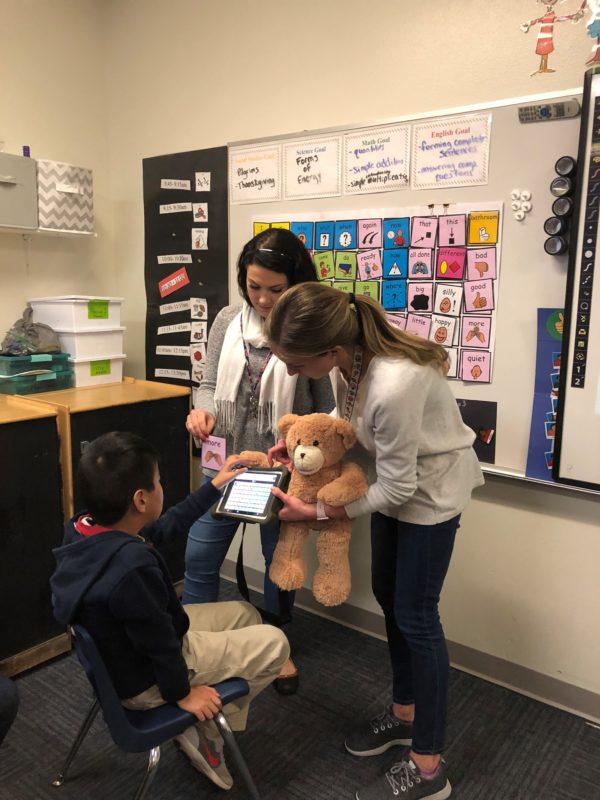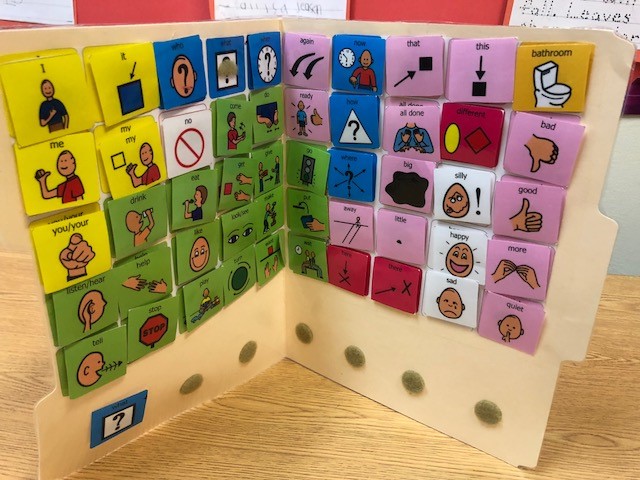AACtual Therapy: Making Core Words Fun for Students with Autism

What’s better that modeling AAC? Doing it with a pal, of course! In this post, we hear from special education teacher Carissa Thompson and SLP Hannah Sellers who work at Princeton House Charter School (PHCS) where they serve students with autism spectrum disorder. Both work with students who use a variety of AAC to communicate and access their curricula. PHCS uses a daily integrated language therapy model which allows for increased opportunities to collaborate with teachers and to organically meet the communication needs of their students. Today, Hannah and Carissa share ways in which they team up to provide AAC supports with a fun twist.
AAC & Autism: Making Core Words Fun with Bluebee Pals
In this post, we would like to introduce you to a recently discovered therapy and classroom tool that has made core words fun for our students! Meet Bluebee Pals
Bluebee Pals are a group of educational plush tech companions that are Bluetooth-enabled for increased participation and interaction during a variety of academic and communication activities. Our students are so enamored by the way Bluebee’s mouth moves while he is singing, speaking, or reading! Because of their Bluetooth capabilities, they can be connected to a variety of iDevices and Android tablets and act as the voice output for most apps. We have seen this tool drastically increase our students’ participation and interaction in a variety of activities. Last year we had the opportunity to implement a variety of core word techniques and activities for our students.
One therapy technique that has been both fun and effective in teaching core words is using Bluebee to implement Drs. Cathy Binger’s and Jennifer Kent-Walsh’s RAAP Strategy during shared reading with our AAC users. Instead of always using our own voices to provide aided language input, we use Bluebee to provide the modeling by connecting it to our iPads and using whichever communication app our student is using (e.g., Proloquo2Go, GoTalk, TouchChat, etc.).
Once Bluebee is connected, any symbol that is activated on the iPad will now be produced through Bluebee’s speaker. This means Bluebee can be the one modeling the two core words during the “Read” “Ask” and “Answer” parts of RAAP, along with a communication board or device. How fun and engaging is that?! We have used this strategy both in therapeutic sessions and in small groups during classroom reading activities to target comprehension, shared attention, and exposure to core words. We have seen increased participation, utterance length, and independent use of core words in our AAC users through implementing this technique.
Because of our daily integrated language model, we have had the opportunity to work together to implement large and personal sized core word board for Carissa’s classroom. These students have a variety of communication abilities with several using AAC high-tech devices, some using pictures, and some who are verbal. As we began implementing core words of the week, we used Bluebee to help provide aided language modeling as we taught new words and used him throughout the day with various activities. For example, when teaching the core word “more,” we often used bubbles as an activity to provide students with the opportunity to request “more.” Instead of us modeling the use of the word, we had Bluebee say and point to the word on the large core board, which allowed for not only increased attention from our students but also a more fun and interactive activity.

Incorporating Bluebee Pals into our core word instruction has been a great way to increase our students’ motivation and participation in a variety of activities while also giving them a fun, novel way to learn!
:::::::::::::::::::::::::::::::::::::::::::::::::::::::::::::
Binger, C., Kent-Walsh, J., Ewing, C., Taylor, S. (2010). Teaching educational assistants to facilitate the multi-symbol message productions of young students who require augmentative and alternative communication. American Journal of Speech-Language Pathology, 19, 108-120.
Filed under: Featured Posts, PrAACtical Thinking
This post was written by Carole Zangari

5 Comments
Just Brilliant!
Are you having an issue with the Bluebee having a half-second lag on AAC apps? It has with every app I’ve tried. So “Hello how are you” becomes “lo how are you”. Any ideas or tips?
Jessica, yes, this is something that I’ve addressed with them. I will follow up and see if they figured out a fix for the issue.
Where can I fine the blue bee pals
Martina, check out this link to their blog: https://www.bluebeepals.com/blogs/